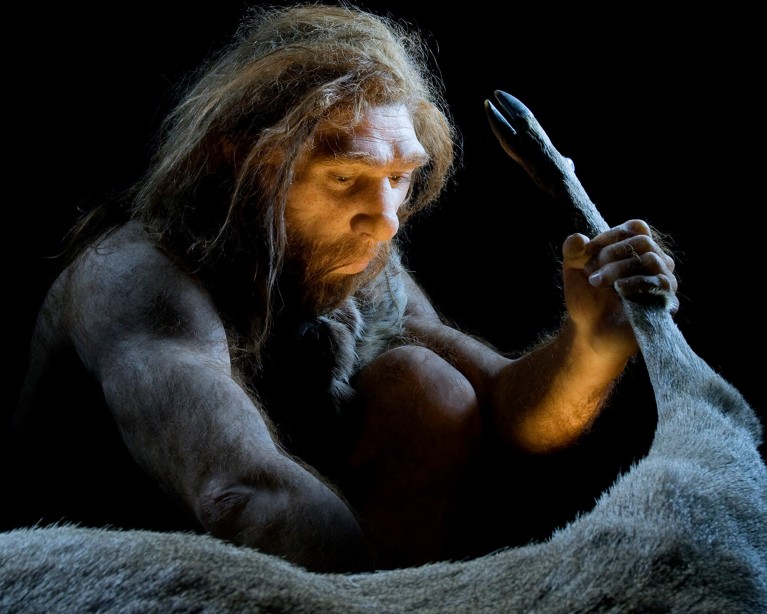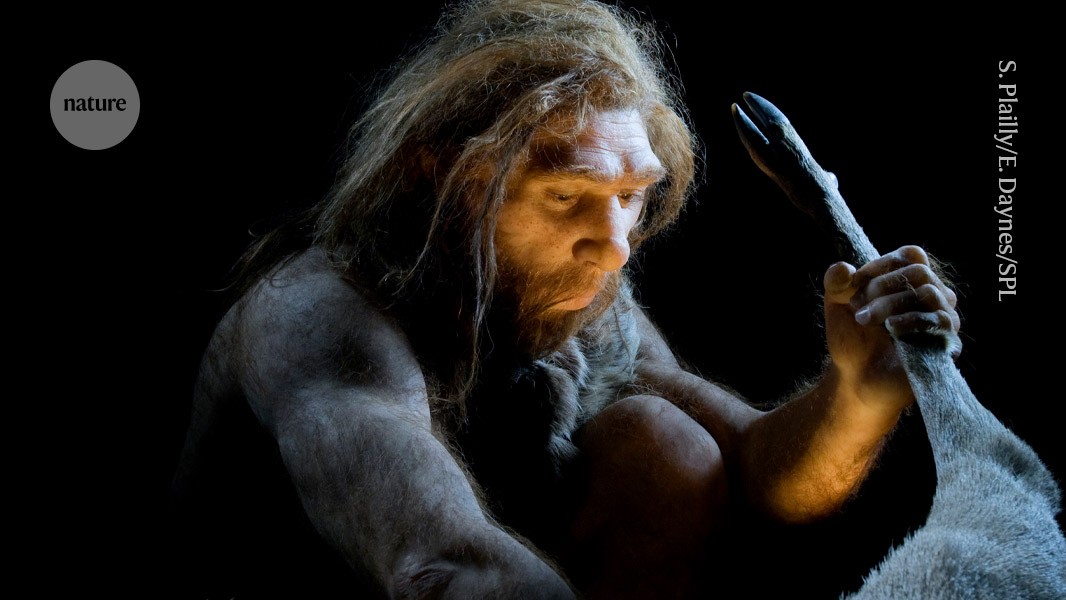
Archaeological evidence suggests that Neanderthals (artist’s impression) were capable of processing animal bones to extract fat.Credit: S. Plailly/E. Daynes/Science Photo Library
Archaeologists have uncovered evidence that Neanderthals rendered fat from bones 125,000 years ago. Modern humans have been using the process for at least 28,000 years, but the latest finding of “fat factories” reveals that Neanderthals were doing it much earlier. The study appeared on 2 July in Science Advances1.
Fat is a vital component of the hunter-gatherer diet, especially during the winter months, when animals are lean and hunted meat alone is not sufficient for sustenance. Eating lean protein without other nutrients can lead to protein poisoning, also known as ‘rabbit starvation’. Fat from bone marrow is a high-calorie source of nutrition, and is an important addition to a protein-heavy diet.
During the process of rendering fat, bones were broken down into small segments using stone hammers and were boiled to extract fat, which rose to the top and could be extracted after cooling. Containers made from bark and animal tissue have been suggested for this process, although such artefacts would be unlikely to be found in the archaeological record due to the perishable nature of these materials.
The team analysed material from Neumark-Nord near Leipzig, Germany: a former lake landscape that has yielded artefacts left by humans and their ancient relatives dating back 400,000 years. They excavated thousands of bone fragments and other remains and artefacts from a layer of the site that has been dated to about 125,000 years ago — long before modern humans arrived in Europe.
Butchered and broken
The bones were heavily fragmented and marked with cuts, and had been harvested from at least 172 large animals, suggesting a large-scale operation in which animals were purposely transported to the area. Many of the bones were scattered around the site, but the researchers found a dense cluster of marrow-rich bones that they describe as a “fat factory”.
No direct evidence of boiling was found, but there were signs of the use of fire near the bone cluster, including charcoal and bones, flint and other rock that had been exposed to heat.
Step by step
Researchers had previously suggested that Neanderthals could have rendered fat, “but the proof was lacking”, says study co-author Lutz Kindler, a zooarchaeologist at MONREPOS Archaeological Research Centre and Museum for Human Behavioural Evolution in Neuwied, Germany.


